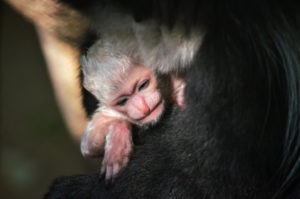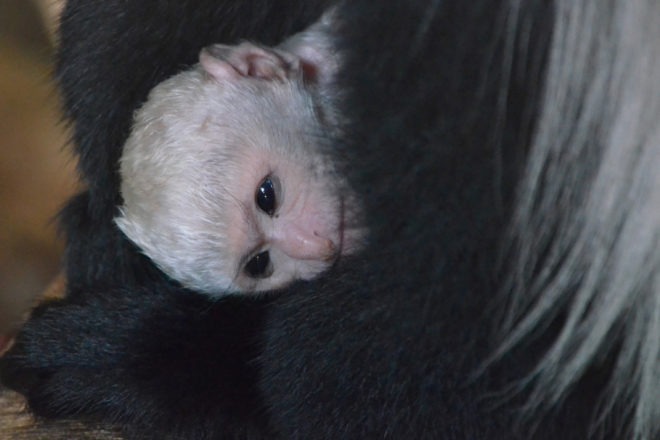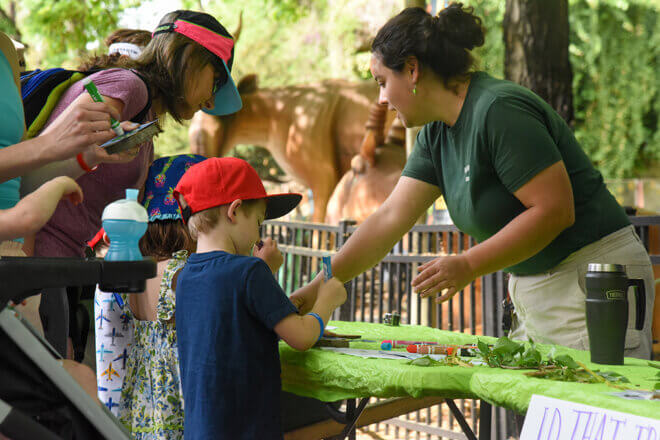BALTIMORE, MD — The Maryland Zoo in Baltimore is pleased to announce the birth of black-and-white colobus monkey baby born in the Chimpanzee Forest on Tuesday, March 19. This is the second baby for The Maryland Zoo’s colobus pair, Keri, age 15 and Bisi, age 20. “Gonzo,” born in April 2012, was the first offspring for the troop and is now the older brother of this infant, whose gender is not known at this time. “As with the first birth, we want the mother and baby to be as comfortable as possible, so we are not interfering with them at this time,” stated Mike McClure, general curator. “The troop dynamic is different this year with Gonzo being a very curious juvenile, and the staff is monitoring them very closely.”
Colobus monkeys (Colobus guereza) are found in all types of forests in equatorial Africa. They are easily distinguishable by their black bodies and long white tails, and are highly social animals that spend most of their time sitting in the treetops eating and socializing. They take turns sleeping at night so that one member of the troop is always awake and watching for predators. The species is considered “in decline” as they are threatened by loss of forest habitat across equatorial Africa, and are also hunted for their meat and fur.

The colobus monkey birth is the result of a recommendation from the Colobus Species Survival Plan (SSP) coordinated by the Association of Zoos and Aquariums (AZA). SSPs provide breeding recommendations to maximize genetic diversity and appropriate social groupings, with the goal of ensuring the long-term survival of the captive population and the health of individual animals.
The Maryland Zoo now has five colobus monkeys — two adult females, an adult male, a juvenile male and the new infant. Zoo visitors can see the colobus monkey troop inside the Chimpanzee Forest where they share the exhibit with red tailed guenons, rock hyrax and African porcupines.
“Colobus infants are covered in white fur and cling tight to Mom’s belly,” concluded McClure. “As the baby grows, the white fur will gradually change to the sharp black-and-white coloration of the adult colobus.”






Share this article